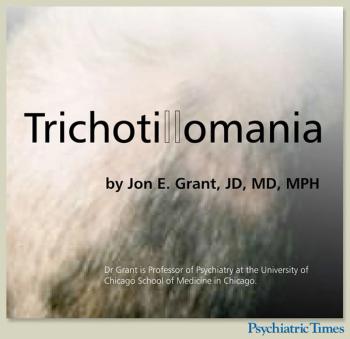
Bipolar disorder frequently co-occurs with OCD and complicates treatment of OCD symptoms. Special considerations are discussed.

Bipolar disorder frequently co-occurs with OCD and complicates treatment of OCD symptoms. Special considerations are discussed.

Impulsive and compulsive behaviors intersect and commonly occur within the same individuals.

The authors discuss common neurobiological processes that may contribute to OCD vulnerability and its persistence.

Despite heterogeneity in symptoms, there is growing realization that common neurobiological processes may contribute to OCD vulnerability and its persistence.

OCD is a serious psychiatric condition that can be effectively treated, with evidence-based approaches, in a majority of cases. There are, however, circumstances that complicate our treatment of OCD, and this article presents some of these issues.

Hair-pulling can be associated with depressive symptoms and anxiety. While treatment is often elusive, some therapies have been found to be effective. This slideshow reviews noteworthy studies for clinicians to review.

Although the pharmacological treatment of impulsivity represents an exciting and possibly more effective means of relieving the burden of mental health illness, precisely what is meant by impulsivity and its neurobiological substrates?

Impulse control disorders are common psychiatric conditions in which affected individuals typically report significant impairment in social and occupational functioning, and may incur legal and financial difficulties as well.

Here, Dr Jon E. Grant talks about the genetics, neurobiology, and cognitive processes of body-focused repetitive behaviors, which include trichotillomania, skin picking, and other behaviors.

The young adult years (18 to 29) are a critical time of transition, and they present unique challenges in regard to mental health issues and development. Until recently, most research has focused either on children and adolescents or adults. Grant and Potenza’s Young Adult Mental Health is a comprehensive text for clinicians and researchers who work with persons in the transitional period of young adulthood.

Pathological gambling (PG) is characterized by persistent and recurrent maladaptive patterns of gambling behavior (eg, a preoccupation with gambling, the inability to control gambling behavior, lying to loved ones, illegal acts, and impaired social and occupational functioning).1 With past-year prevalence rates similar to those of schizophrenia and bipolar disorder,2 it is apparent that PG has become a significant public health issue. The aim of this article, therefore, is to introduce clinicians to the assessment and treatment of PG with the hope that early interventions will reduce the considerable personal and social costs associated with the disorder.

Published: November 11th 2020 | Updated:

Published: September 13th 2020 | Updated:

Published: August 20th 2015 | Updated:

Published: February 2nd 2010 | Updated:

Published: September 9th 2011 | Updated:

Published: March 1st 2007 | Updated: